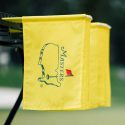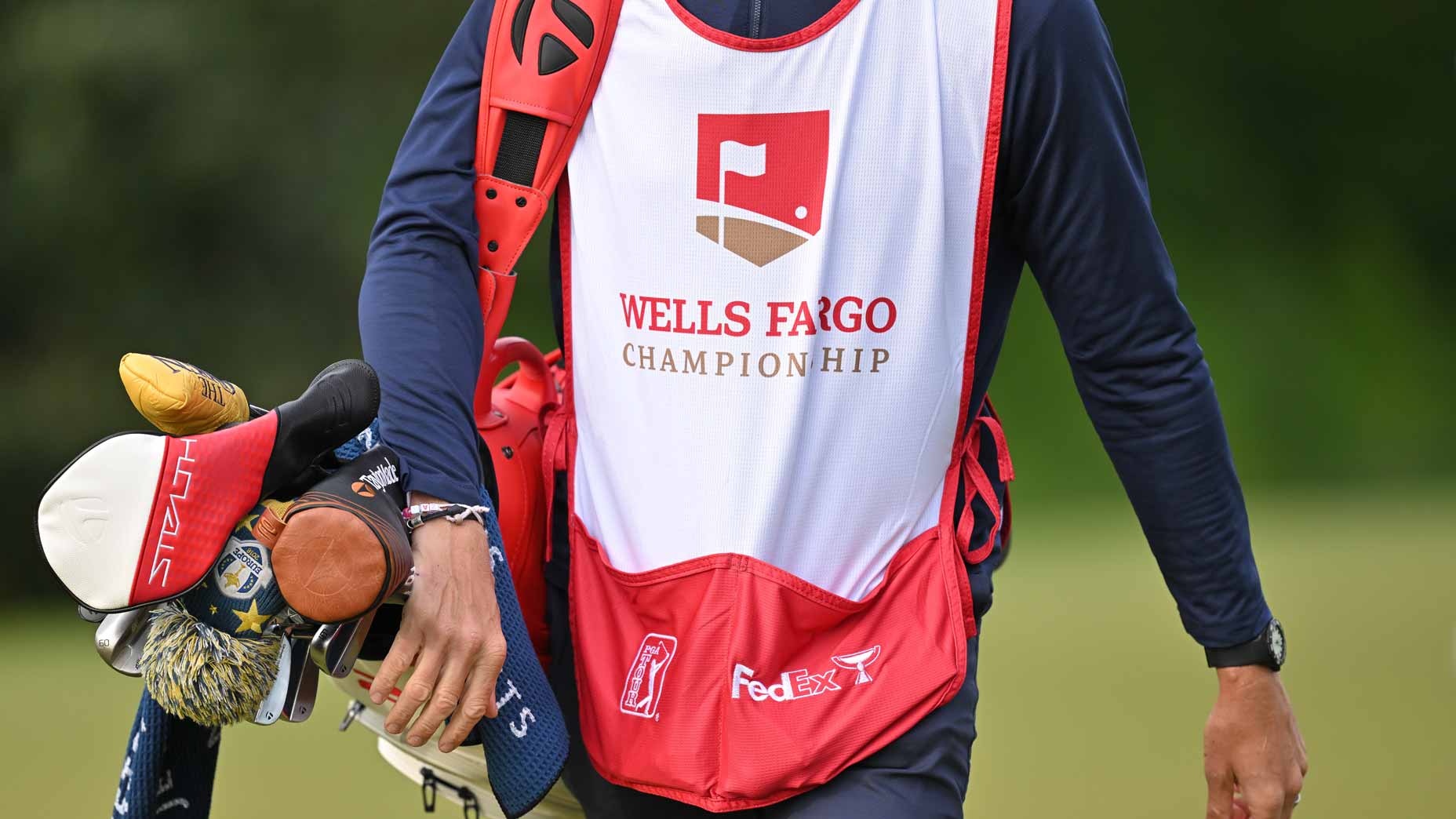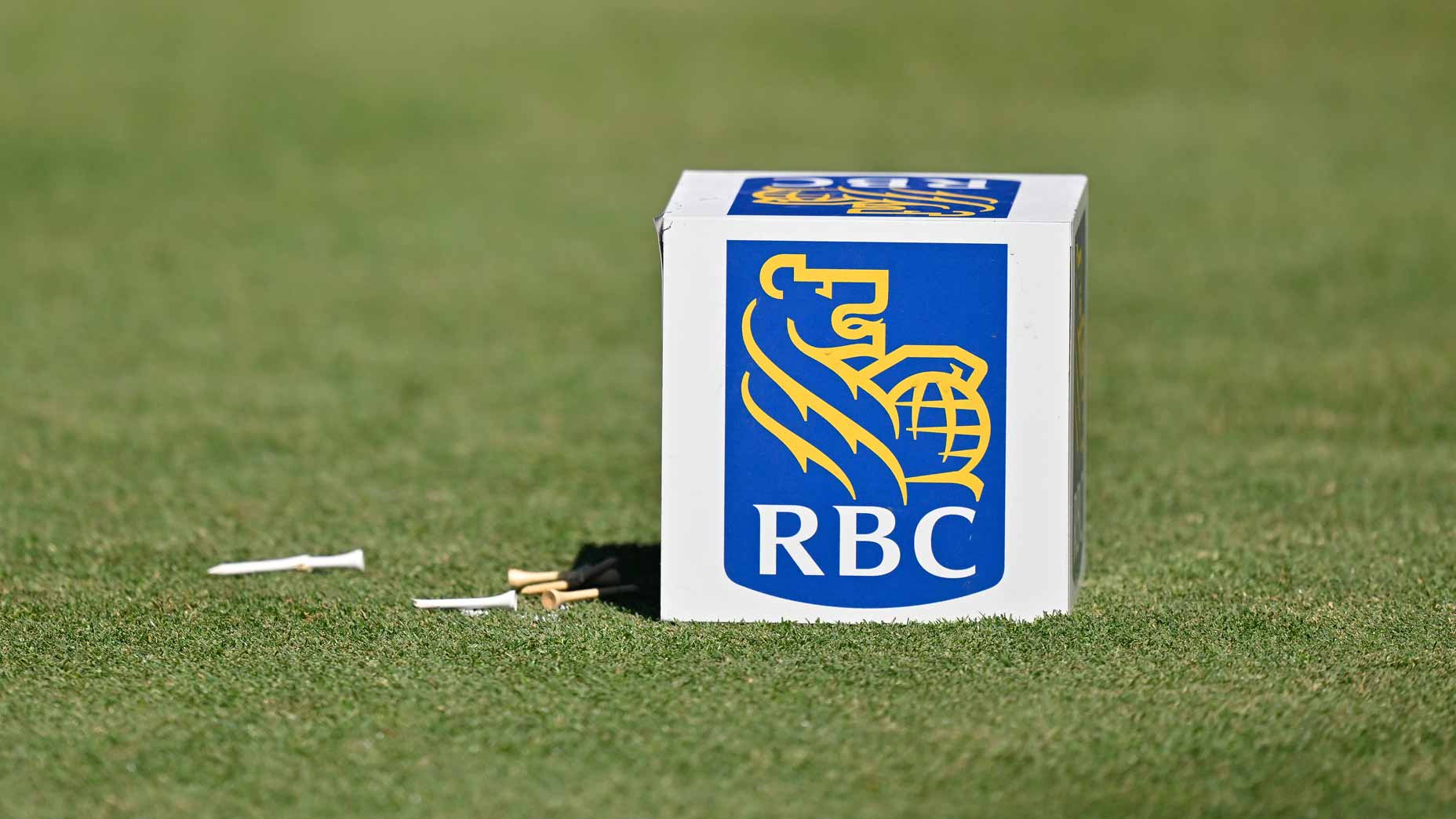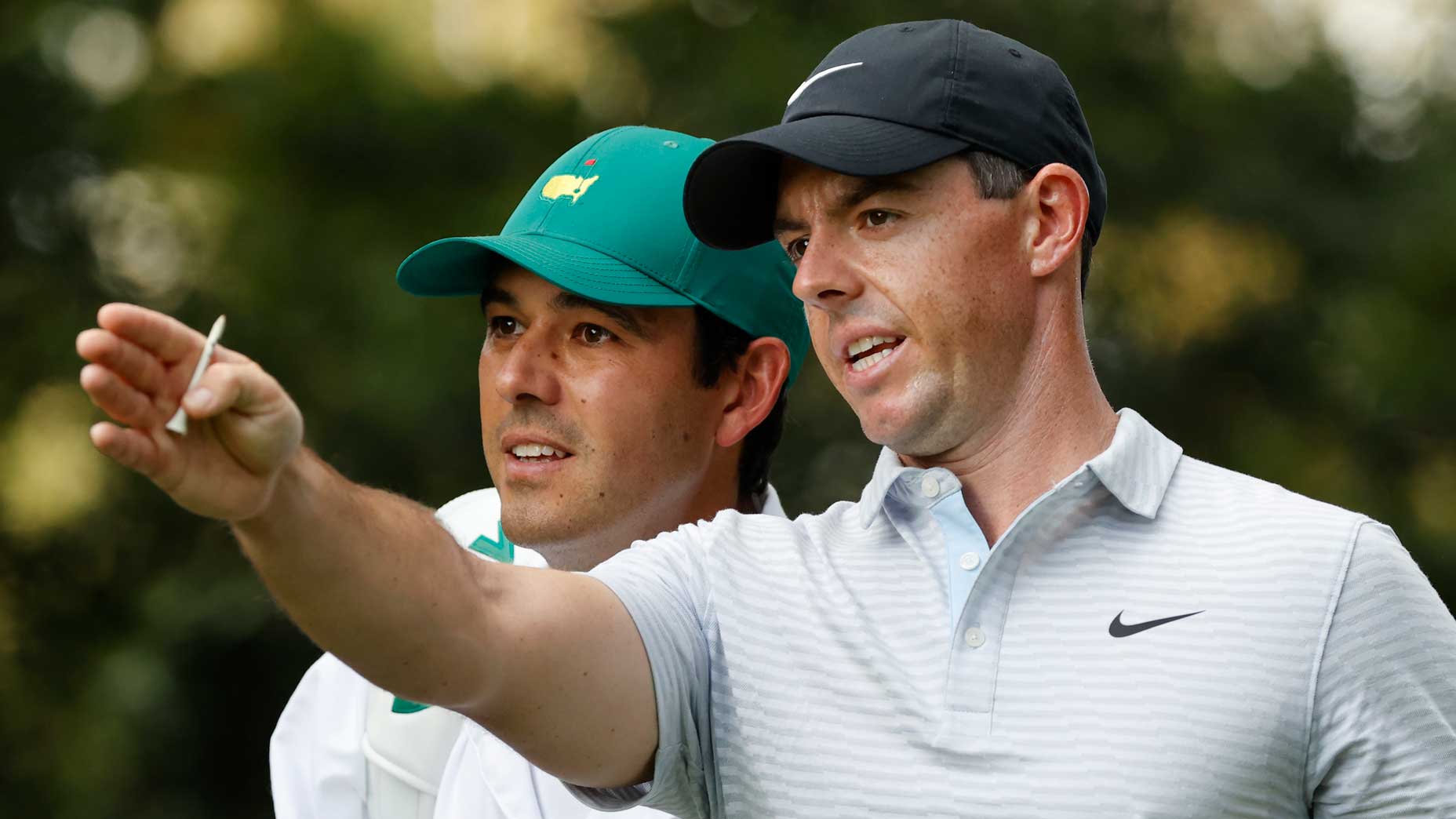Growing up, watching the Masters was a tradition in our home. It was the starting point of our race through spring and summer. My father fondly remembers watching the 1986 Masters and Jack’s epic win with one-year-old me at his side. Fast-forward to 2017, and I remember watching my son, Austin, exclaim with pure joy as Sergio hit the flagstick on 15 on Sunday. He really couldn’t contextualize what that win meant for Sergio and so many golf fans around the world. But he did understand that it was special and that “the Masters was cool.” Just as my love affair with golf started with watching the Masters, so too did Austin’s. I’m sure this parallel story could be told from a million homes.
So when GOLF.com asked me to cover the 2019 Masters Tournament, I honestly did not believe it. I checked my email weekly (okay, daily), waiting for the retraction of the invite. The “Oops, we made a mistake” message. That never came and as the weeks ticked down my anticipation fueled my preparation for the event.
As a photographer, I have always been more attracted to the work of Dave Heath, Joel Meyerowitz, Henri Cartier Bresson rather than the great sports photographers. Neil Leifer and Walter Iooss are big two exceptions there, but when I started my planning for the Masters I found myself poring over images that had nothing to do with golf or sports. I studied street photography and referenced portrait books from this era that, for me, the Masters seems to reside in. As I dove into the archival images of the tournament from 2018 all the way back to the 1960s, I seemed to gravitate to the older images. In my mind, I saw Augusta through this vintage “bygone era” perspective.

Having only heard about the restrictions and tales of caution around Augusta National, I went into the tournament as fully prepared as I possibly could’ve been. I watched hours of YouTube videos and looked for the photographers in the crowds to see where they were and how they got around. I looked at every flyover, overhead map and routing I could find to pick out spots that would make for clean images. I had all the Nikon lenses I would ever need to cover any potential shot. I ordered loads of film. I was set.
With my cameras and film in tow, I arrived at Augusta National Golf Club on Monday. The press building is without a doubt the best media facility in sports. We photographers our accustomed to being tucked back in the belly of an area or a tent someplace adjacent to the actual site. Not so at ANGC, where the stations are clean, well equipped and designed for the typical gear covering this event requires. Simple features like a drawer tall enough to store a super telephoto lens when you come in to edit or run and grab lunch are things you just do not see. Upstairs, the writers sit in a large auditorium overlooking the tournament practice range. I hadn’t yet seen the course and already I was in awe.
I dropped my gear and waited for the quick rundown on the dos and don’ts of the place. I then grabbed a camera and headed for the course. The first time you turn the corner and see that classic Masters leaderboard with the flags waving is surreal. As my eyes bounced off the board, I immediately saw the 9th green, then the 18th behind it, and the first tee to the right. Then I spotted the fabled “Big Oak” in front of Augusta’s iconic clubhouse. My first few minutes on the course were a bit of a daze trying to take in these visuals I’ve grown up watching my entire life.
For much of the week we dodged wind or rain. This meant crossings all over the course were closed; jumping from the 2nd tee box down to the 11th would have been a nightmare if I hadn’t known where to cross. As Thursday play started, thousands of patrons began flowing through the gates, and I found my rhythm with them. By the end of the day I was in a strange dance with the crowds and course, leaping from one spot to the other, checking tee sheets and my watch and chatting with the patrons around me. The first round was my chance to really understand how the golfers would attack the course. My focus for the week wasn’t just the action, and when it was, I needed to be creative. I found a few new angles or spots where other photographers’ assignments wouldn’t take them. I experimented, failed and learned on these early days: which shots worked, where the players tended to miss and how the crowds navigated each hole.
Each day started by 7 a.m. and ended near midnight. A few breaks in between and fast meals kept my energy up enough to hoof it around the steep slopes of Augusta. By the weekend, my body was a wreck from the pounding of covering a tournament like this one. By the time my head hit the pillow I’d be asleep.
I loved every minute of it. I realized how lucky I was to be here and how many people would kill for the chance I had. My mission was to shoot as thoughtfully as I could every day and walk through any wall in my way. I learned how to sweet talk the patrons into letting me get up in front of them so I could get “the shot.” I learned which staff was maybe a little more serious than others and which ones would let me stand here or there. The most important lesson was being able to squeeze my way to the front of lines at crossing gates. With so many closed walkways and hordes of people trying to shuffle through, getting stuck at the back of bottlenecks could mean missing two or more holes of play. Pro tip: have a photo badge and be really polite and ask people if you can get past. Nine out of 10 times, they are happy to oblige.
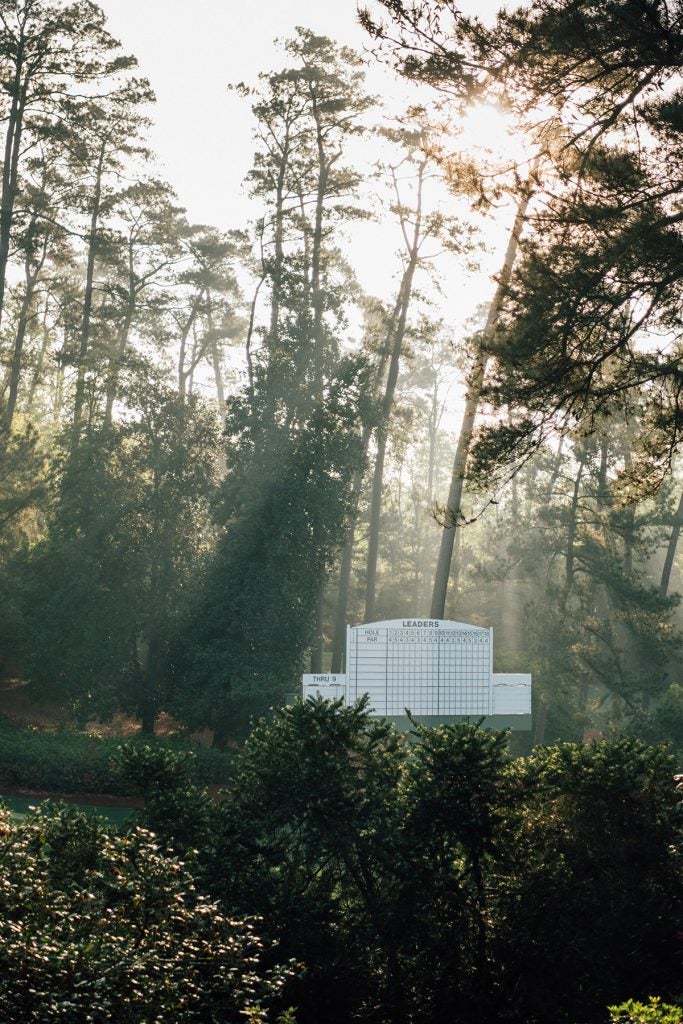
These lessons paid off on Sunday. As Tiger Woods marched from the 10th green to the 11th tee, I hustled down to Amen Corner and camped out at the tiny, treacherous par-3 12th, which was already claiming contenders. On Friday I had found an angle and a shot that I loved behind the 12th tee. With patrons lounging in their chairs in the foreground, the players and the green filled the rest of the frame. It gave the tee shot a sense of place and scale. The difference on Sunday was how deep the crowd was between me and that spot. I wove in and out the masses, dropping “pleases” and “thank yous.” A group of guys behind me took playful jabs but after a few seconds you could tell they almost wanted me there. They even helped suggest to another patron that he move a little to let me through.
I watched as Brooks Koepka’s group put two balls into the water. The crowd was in disbelief and I was a mess internally. It was happening again. Whatever it is that happens in this little corner of the world that can cause equal amounts of joy and anguish for professional golfers — it was happening again. As Tiger’s group walked to the tee, the crowd was restless. The storms lurking overhead and the two water balls on the previous three swings electrified the place. Next came Molinari: another water ball. Then Finau: yet another!
As Tiger stepped up, I shuffled a little closer and pointed my camera at him. As he took the club back, I started shooting, holding the shutter through his finish. I peeled my eye back from the viewfinder to see the ball land just as patrons leaped up to their feet. The roars was so loud, they seemed to scare off the looming storm. In a sliver of time, I captured the shot that I think changed the tournament. It’s one of my favorite images I have ever taken. What I love most is the scene it paints with Tiger in Sunday red, with his caddie and loyal fans looking on as the greatest comeback in sports was coming to fruition.
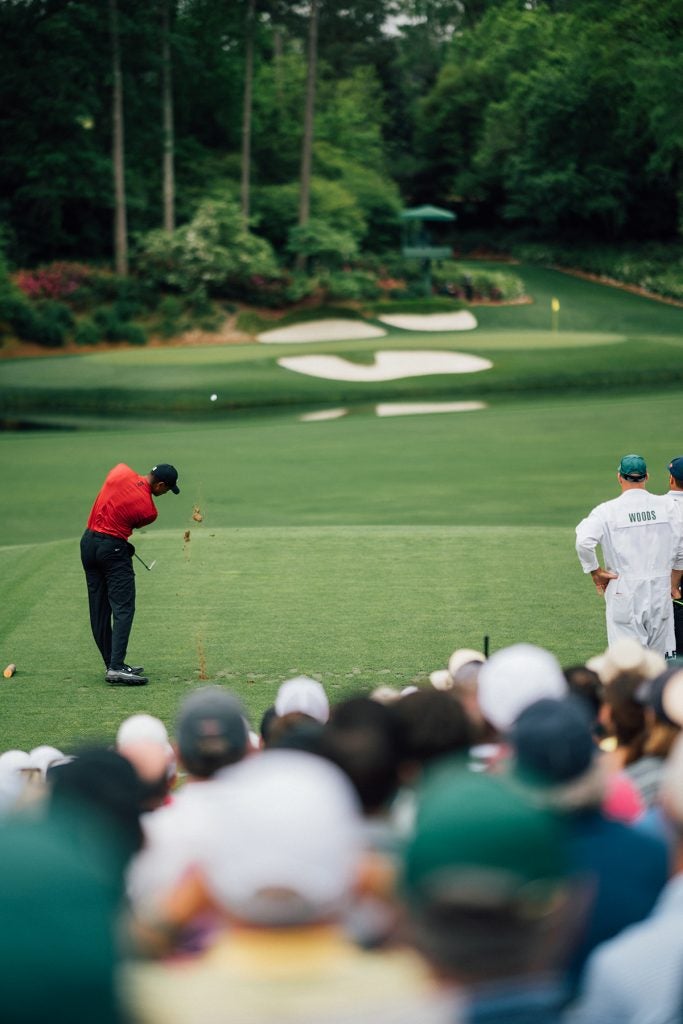
When people asked “How was it?” I couldn’t really explain it in a few words. The week seems to build into itself each day, and by Sunday afternoon the crowds, anticipation and ultimately drama of the tournament erupt. Especially Sunday this year. I was there to impress my wife and kids and leave some images for them to be proud of. I was there to witness history and luckily snap a few images that will stand up over time as reference points for that improbable week.
I’ll look back on this week fondly for the rest of my life. I lost five pounds, plenty of memory cards and ruined two pairs of shoes in the mud but I walked away with the most intimate experience of the most viewed tournament in all of golf.
To receive GOLF’s all-new newsletters, subscribe for free here.


